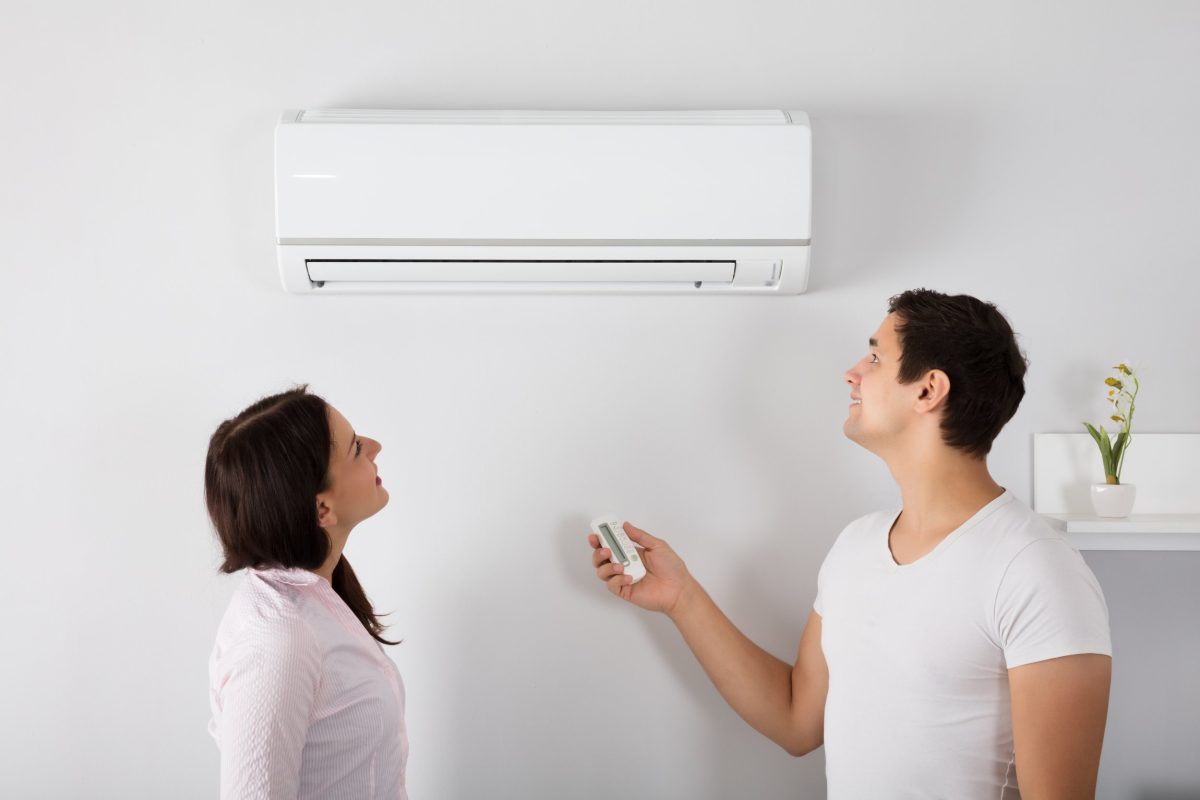Science
Air Conditioning Wars: Why Women Feel the Chill More Than Men

As the summer of 2025 brings soaring temperatures across the UK, the longstanding debate over office air conditioning has resurfaced. This phenomenon often leads to discomfort for many female employees, who commonly feel colder than their male counterparts. The temperature settings in workplaces, particularly during a British summer, have become a focal point in the ongoing discussion about gender differences in thermal comfort.
Despite individual preferences, most office environments have a predetermined thermostat setting, which often aligns with male comfort levels. This situation raises concerns, as it may inadvertently disadvantage women in the workplace.
Why Women Prefer Warmer Temperatures
There are several scientific reasons behind why women typically prefer higher temperatures than men. One significant factor is body composition. Women generally have less muscle mass than men, and muscle tissue plays a crucial role in generating heat through metabolism. According to Dr. Boris Kingma, a thermal physiologist at the Netherlands Organisation for Applied Scientific Research, “A gram of muscle from a man has the same metabolic rate as a gram from a woman. But men have more muscle.”
This difference in muscle mass means that men naturally produce more heat, which can lead to discomfort for women when the thermostat is set too low. Additionally, women often have a smaller body size, which affects heat retention. Smaller objects tend to have a higher surface area relative to their volume, leading to greater heat loss. Dr. Kingma describes this as a “double whammy,” where women lose heat more rapidly in colder environments.
The Influence of Office Fashion
Another contributing factor to women’s discomfort in air-conditioned offices is the style of clothing that is often worn in professional settings. Women’s fashion tends to be more conducive to cooler temperatures, especially during the summer months. Many women opt for lighter, more breathable fabrics, such as strappy tops and dresses, to cope with hot commutes. However, these choices can leave them shivering in an air-conditioned office set to a brisk 19°C.
Dr. Matt Maley, a physiologist at Loughborough University, notes that laboratory studies indicate women generally require temperatures one to two degrees higher than men to feel “thermally comfortable.” The stark contrast between traditional office attire for men, often designed for warmth, and the more revealing styles favored by women can exacerbate this issue.
This discrepancy in temperature preferences also reflects broader societal trends. The standard unit for measuring clothing warmth, known as the “clo unit,” was historically based on what a man would wear—typically a three-piece suit. Dr. Maley emphasizes that this expectation does not account for the attire women wear in contemporary workplaces, making their discomfort understandable.
As workplaces evolve, some men are beginning to adopt more casual styles, such as short-sleeved shirts and even shorts. This shift can potentially influence thermostat settings, as increased skin exposure may lead to a collective willingness to raise the temperature slightly.
The ongoing air conditioning debate highlights the need for greater awareness of gender differences in thermal comfort within workplace environments. Understanding these factors can lead to more inclusive and comfortable office settings for all employees, regardless of gender.
Ultimately, as summer heats up, addressing the temperature divide in workplaces may help foster a more equitable environment where everyone can thrive.
-

 Entertainment3 months ago
Entertainment3 months agoAnn Ming Reflects on ITV’s ‘I Fought the Law’ Drama
-

 Entertainment4 months ago
Entertainment4 months agoKate Garraway Sells £2 Million Home Amid Financial Struggles
-

 Health3 months ago
Health3 months agoKatie Price Faces New Health Concerns After Cancer Symptoms Resurface
-

 Entertainment3 weeks ago
Entertainment3 weeks agoCoronation Street Fans React as Todd Faces Heartbreaking Choice
-

 Entertainment3 months ago
Entertainment3 months agoCoronation Street’s Carl Webster Faces Trouble with New Affairs
-

 World3 days ago
World3 days agoKevin Sinfield Exceeds Fundraising Goal Ahead of Final Marathons
-

 Entertainment3 days ago
Entertainment3 days agoTwo Stars Evicted from I’m A Celebrity Just Days Before Finale
-

 World3 weeks ago
World3 weeks agoBailey Announces Heartbreaking Split from Rebecca After Reunion
-

 Entertainment3 months ago
Entertainment3 months agoWhere is Tinder Swindler Simon Leviev? Latest Updates Revealed
-

 Entertainment4 months ago
Entertainment4 months agoMarkiplier Addresses AI Controversy During Livestream Response
-

 Science2 months ago
Science2 months agoBrian Cox Addresses Claims of Alien Probe in 3I/ATLAS Discovery
-

 Health5 months ago
Health5 months agoCarol Vorderman Reflects on Health Scare and Family Support





















